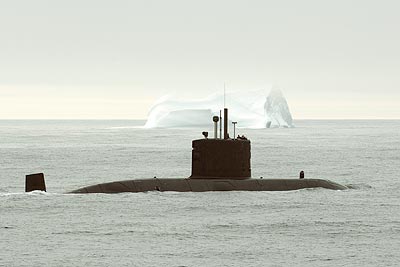 From atlantic-community.org: [B]y the very end of the Bush presidency, the administration issued a presidential directive on Arctic Region Policy, to update US assessments of the north. In this directive, the administration underlined that the United States has broad and fundamental national security interests as well as fundamental homeland security interests in the Arctic. The directive presents both priorities that the US traditionally has had in the region, such as the freedoms of the seas, deployments of sea and air systems, missile defense and early warning, in addition to policy elements more directly affected by the retreating Arctic ice-cap, such as safe maritime activity, energy security and environmental sustainability.
From atlantic-community.org: [B]y the very end of the Bush presidency, the administration issued a presidential directive on Arctic Region Policy, to update US assessments of the north. In this directive, the administration underlined that the United States has broad and fundamental national security interests as well as fundamental homeland security interests in the Arctic. The directive presents both priorities that the US traditionally has had in the region, such as the freedoms of the seas, deployments of sea and air systems, missile defense and early warning, in addition to policy elements more directly affected by the retreating Arctic ice-cap, such as safe maritime activity, energy security and environmental sustainability.
While the directive remains in effect as the Obama administration’s official policy, two policy dimensions are particularly highlighted by Bush’s successor. First, the Obama administration emphasizes the importance of cooperation with Russia in the Arctic, as part of its broader efforts to reset relations with Moscow. Second, the administration more thoroughly underlines environmental security and sustainable development in the region.
Commentators in the United States and elsewhere have cautioned that state interests in the Arctic are clashing. Assertive Russian statements, symbolic actions such as the planting of the Russian flag on the seabed of the North Pole, as well as the restart of strategic bomber flights close to the territory of other Arctic nations, have contributed to media headlines. Nonetheless, the Arctic states do cooperate in the region, especially as seen in the Arctic Council. Moreover, the region’s coastal states agree that there is no need to develop any new specific comprehensive legal regime to govern the Arctic. This was underlined in Ilulissat in 2008, and the parties are meeting again in Chelsea, Canada in late March this year to discuss future reinforcement of Arctic cooperation. (photo: Master Corporal Blake Rodgers/Canadian Ministry of National Defense)
Image: canada_3_12_10.jpg
